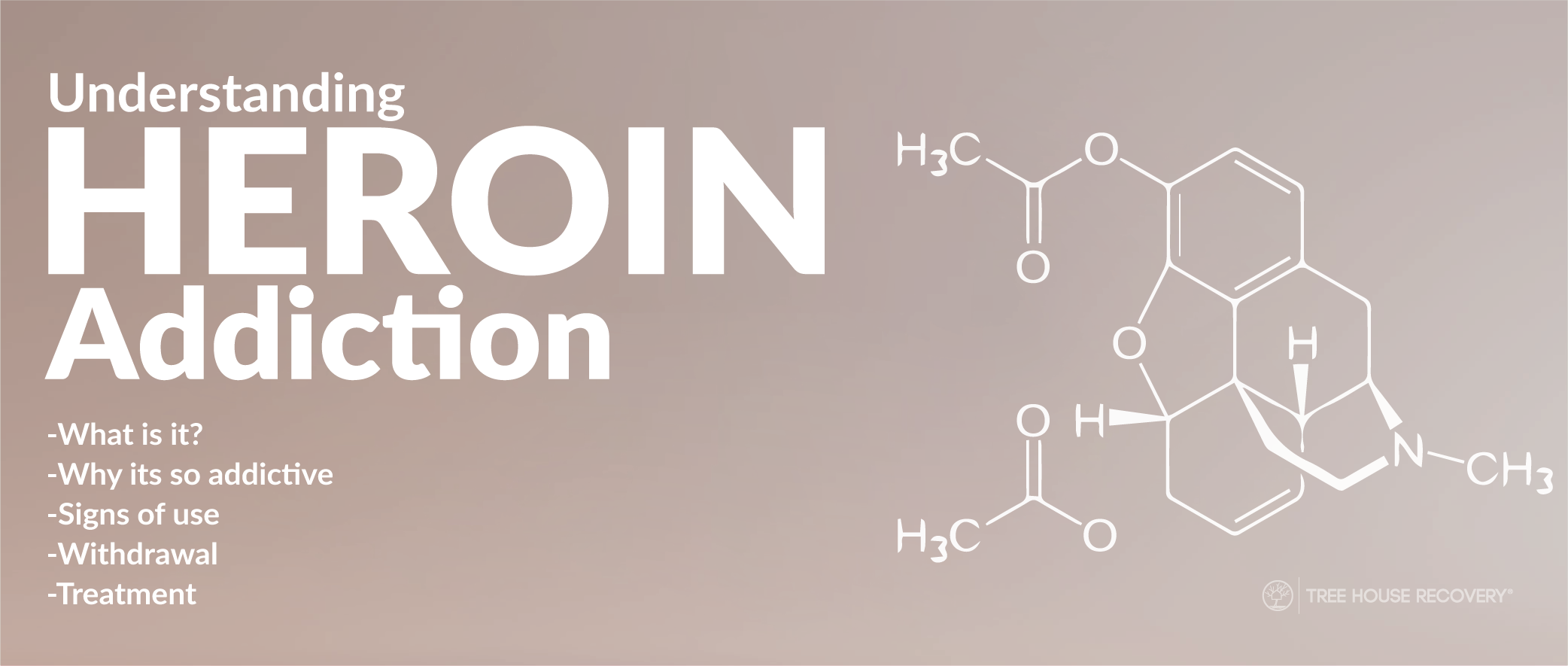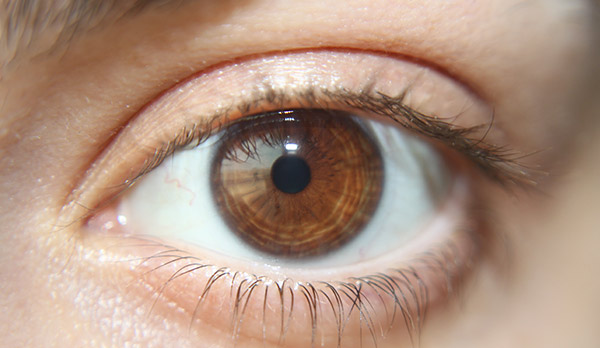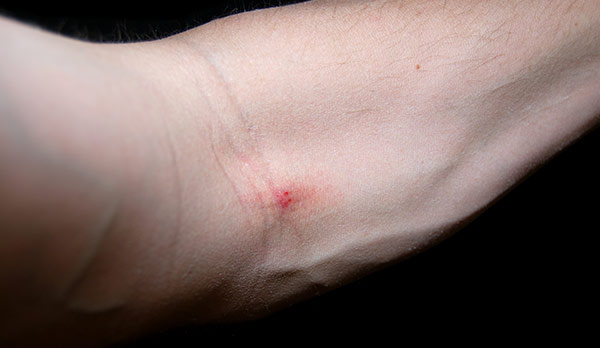
Heroin addiction can feel like an overpowering trap, pulling individuals and their loved ones into a cycle of pain, fear, and uncertainty. As one of the most addictive and dangerous substances, heroin takes hold quickly, impacting the mind, body, and relationships in devastating ways. Fortunately, recovery is achievable with determination and the proper treatment and support.
This page explores the most common signs of heroin abuse, the risks of addiction to this powerful drug, and how to connect with compassionate and evidence-based care.
Heroin is a fiercely addictive semi-synthetic opioid that comes from morphine, a substance that naturally occurs in opium poppy plant seed pods. Forms of heroin include white, off-white, or brown powders and a sticky black substance (black tar heroin). People use the drug by injecting, snorting, or smoking it. All methods of use carry significant health risks.
When heroin enters the body, it binds to opioid receptors in the brain, triggering a rush of euphoria, relaxation, and pain relief. These intense effects make heroin dangerously appealing, especially to those looking to escape emotional or physical pain. That said, the fleeting high comes at a steep cost—heroin use quickly provokes dependence, addiction, and severe physical and mental health complications.
Heroin use in the United States has seen a significant decline in recent years, according to data from NSDUH (National Survey on Drug Use and Health). Among adults aged 18+, approximately 1 million reported using heroin in 2022. By 2023, that number had dropped to 660,000. While this reduction is encouraging, it is primarily attributed to the rise of fentanyl—a lethal synthetic opioid that’s even more damaging.
Despite the decline in use, heroin is one of the most addictive drugs. In 2023, 587,000 of the 660,000 people who used the drug developed an addiction (opioid use disorder) in the same year. The high rate of addiction reflects heroin’s ability to rapidly rewire the brain, potentially causing dependence after only a few uses.
Identifying the signs and symptoms of heroin addiction early can help inform timely and appropriate intervention. Addiction to opioids doesn’t just affect physical health. It also impacts behavior, emotions, and interpersonal relationships. People struggling with heroin addiction often try to hide their use, but there are some clear warning signs to look for.
Heroin use leaves visible marks on the body that become more pronounced as addiction progresses. Common physical heroin addict signs include:
These symptoms are signs of heroin use and may also indicate life-threatening health risks, from infections and overdose to respiratory failure.

Opioids, including heroin, cause the pupils to constrict, making them appear “pinned.” Also look for tired look, red, and puffy eyes.

When heroin is injected, it created cuts on the arms, hands, feet, or neck known as “track marks.” Heroin users will often mask these marks by wearing long sleeves.
Behavioral changes often accompany the physical symptoms of heroin addiction. These may include:
Behavioral signs often indicate that heroin use is taking over the person’s life, pushing them further into isolation and deeper into addiction. Since addiction is a progressive condition, seeking help sooner rather than later delivers superior outcomes.
Heroin addiction is one of the most destructive forms of substance abuse, affecting all aspects of a person’s life. Prolonged use of the drug can cause physical, mental, and social complications that worsen over time. Heroin damages organs, compromises the immune system, and increases the risk of chronic illnesses like liver and kidney disease. Long-term use often provokes lung complications, including pneumonia and tuberculosis, due to weakened health and slowed breathing.
Heroin addiction can also profoundly impact mental health. Many people develop anxiety, depression, or severe mood disorders. Heroin alters brain chemistry, making it difficult for people using the drug to feel pleasure naturally. This compounds dependence and leaves the person stuck in a vicious cycle of cravings and emotional instability. Beyond the physical and mental toll, heroin addiction also disrupts relationships, causes financial strain, and may lead to legal troubles. Left untreated, heroin addiction can be life-threatening, but evidence-based interventions make recovery achievable.
A heroin overdose is a medical emergency that occurs when the drug overwhelms the body, suppressing breathing and heart rate. Overdoses often happen because those who use the drug cannot determine the strength or purity of the substance they’re taking. Increasingly, batches are adulterated with fentanyl, which is 50 times stronger than heroin and increases the risk of overdoses, even in tiny amounts.
The signs of a heroin overdose are unmistakable and should never be ignored. They include:
Without immediate treatment, an overdose can trigger permanent brain damage, organ failure, or death. Fortunately, naloxone (Narcan) can reverse the effects of a heroin overdose if administered promptly. That said, medical attention is still essential to prevent further complications.
Effective heroin addiction treatment addresses physical dependence as well as the underlying psychological and emotional factors driving drug use. Treatment combines medications, therapy, and ongoing support to help people get sober and stay sober. FDA-approved medications like methadone, naltrexone, and buprenorphine can reduce cravings and mitigate withdrawal symptoms, making it easier for people to focus on therapy.
Behavioral therapies, such as CBT (cognitive behavioral therapy) and group counseling, help people develop healthy coping mechanisms and identify triggers. Support groups like NA (Narcotics Anonymous) can also play a central role in promoting accountability and providing encouragement throughout recovery.
Detoxing from heroin is the first step in recovery, and it’s also one of the most taxing. During detox, the body eliminates heroin, triggering withdrawal symptoms like nausea, anxiety, muscle aches, and intense cravings for the drug. Symptoms generally peak within 24 to 48 hours after the last use, persisting for a week or more.
A medically supervised detox ensures the process is as safe and comfortable as possible. Healthcare professionals can monitor vital signs, manage symptoms, and provide emotional support. Detox stabilizes individuals and acts as a bridge to ongoing inpatient or outpatient treatment.
Inpatient heroin rehab programs provide a structured and supportive environment for individuals recovering from opioid addiction. People live at the facility for 30 to 90 days and receive 24-hour care. This is especially helpful for those with severe addictions or co-occurring mental health issues.
Residential rehab programs for heroin addiction typically include a blend of individual therapy, group counseling, and holistic interventions like yoga or art therapy. By removing people from their everyday environments, inpatient rehab reduces exposure to triggers and temptations, enabling them to focus entirely on recovery.
Outpatient rehab for heroin addiction offers flexibility for people who cannot commit to a full-time residential program. Participants attend therapy sessions and receive support while living at home and fulfilling daily responsibilities.
Programs like IOPs (intensive outpatient programs) and PHPs (partial hospitalization programs) provide a higher level of care, with multiple weekly sessions. Outpatient rehab is ideal for those with mild addictions or individuals stepping down from inpatient care. Regular check-ins, therapy, and access to peer support help people stay on track during their recovery journeys.
Breaking free from heroin addiction is demanding, but it’s possible with the proper support. Seeking professional treatment can help you or your loved one rebuild a healthier and more fulfilling life free of opioids. You’ll get help breaking dependence, restoring your health, repairing relationships unraveled by opioid abuse, and recalibrating your life.
Tree House Recovery’s heroin rehab program offers compassionate care, proven therapies, and a pathway to lasting freedom from opioid addiction. Take the first and most important step by calling (855) 202-2138.

Talk to a Treatment Advisor Today
Talk to a Treatment Advisor Today